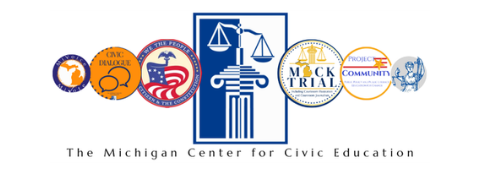By the end of this lesson, students will understand what the Constitution is and
what it does for them; recognize key images related to the
Constitution and its history.
Civics Lessons
Matching Game with the U.S. Constitution
John Marshall, Marbury v. Madison, and Judicial Review—How the Court Became Supreme
In this lesson, students will learn, the role of the Supreme Court in interpreting the Constitution, the significance of Marbury v. Madison, the concept of judicial review and how Marbury v. Madison solidified it, and the relationship between the Supreme Court and laws passed by Congress and state legislatures
Why Government?
Students take a look at two political thinkers who spent a lot of time trying to answer the question, “Why Government?” – Thomas Hobbes and John Locke. The lesson asks students to compare and contrast Hobbes and Locke and to think about how these philosophers influenced those that followed in their footsteps.
Rules, Rules, Rules-The Eraser Game
Students reflect on when and why rules are needed and the importance of rules in the classroom or in a community setting.
Appreciating Democracy
This lesson is designed to teach students to appreciate the most basic practices of democracy in the United States: The lesson can be taught in three or four 45-minute class periods. At the heart of the lesson are three easy-to-teach activities (or simulations).
We the Students: Writing a Class Constitution
The Preamble to the U.S. Constitution sets out the purposes or functions of American government as envisioned by the framers. Using the Preamble as a guide, students will identify the purposes of their own classroom and create a class “constitution.”
Constitution Day Lesson-6th Amendment
The goal of this activity is to introduce 6th grade students to the 6th Amendment of the US Constitution (guarantee of an impartial jury for criminal defendants). The materials illustrate how the American juror selection process differs from the jury selection process used in ancient times during the Roman Republic.
Rules, Rules, Rules
This activity helps students understand the need for rules, the rule-making process, and the role of the student / citizen. The classroom constitution provides a foundation for understanding and reinforcing the principles and ideals which provide the framework for American democracy.
Interpreting the Law
Students learn why laws need to be interpreted by discussing laws/constitutional provisions. They present their findings to the class.
What is Democracy?
In this lesson, students will identify essential components of a functioning democracy. They will be presented with “borderline” countries – hypothetical nations that exhibit some, but not all, of the characteristics of a democracy. Through discussion and group work, students will expand their understanding of democracy and see different manifestations of democratic practices.

